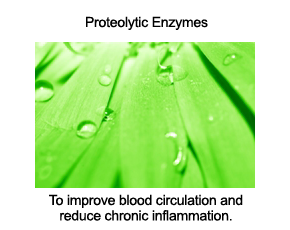You are here
A Simple Way To Reduce Risk of Heart Disease & Alzheimer's
While in Korea, I was happy for several opportunities to offer pro bono health care for elderly folks. The most common advice I shared was how to reduce risk of developing heart disease and Alzheimer's - we are at higher risk for both if we regularly have large spikes in our blood sugar.
Without changing anything about what we eat, here is how we can minimize spikes in our blood sugar from any typical meal:
1. Eat non-starchy, fibrous vegetables first, foods like typical salad vegetables, broccoli, cauliflower, and cabbage.
2. Next, eat foods that are primarily rich in protein (fish, beef, chicken, etc.) and/or healthy fats (eggs, avocados, etc.).
3. Finish with foods that are rich in starch (rice, potatoes, etc.) and natural sugars (fruit, sweet potatoes, carrots, beets).
The idea is simple: by occupying our stomach and the first third of our small intestine with fiber, protein, and fat-rich foods first, we establish something of a natural sponge that soaks up sugar and slows the pace at which it enters our bloodstream.
People who monitor their blood sugar via continuous glucose monitors almost invariably experience significant dampening of blood sugar following a meal when they eat in the order outlined above.
With this principle in mind, when we want to enjoy a treat like a slice of pie or cake, it's best to have it after we ingest something that is rich in fiber, protein, and/or healthy fat.
Even those who mostly eat a minimally processed diet can benefit from this principle - for example, to eat a bowl of fresh fruit after having a handful of walnuts or a soft boiled egg. For the vast majority of us, to eat the bowl of fruit first, followed by walnuts or an egg leads to a higher spike in blood sugar.
Doing some work to stimulate our largest muscle groups before having a substantial meal is always helpful in keeping our blood sugar within a healthy range, as our largest muscles act as sponges that soak up excess sugar from our bloodstream.
Going for a solid walk after meals is also helpful, as doing so creates natural demand within our skeletal, smooth, and cardiac muscle fibers to use up glucose. To be a little more granular, cardiac muscle fibers primarily utilize fatty acids to create energy needed to function, but the heart is metabolically flexible, and is able to use glucose for ATP generation - for this matter, cardiac muscle cells can also use lactate, ketones, and amino acids as sources of carbon substrate to create ATP.
Make no mistake about it: minimizing spikes in blood sugar is a powerful way we can reduce our risk of developing diabetes, heart disease, and neurological issues, including most forms of dementia. Please feel free to share the tips outlined above with family and friends.
Join more than 80,000 readers worldwide who receive Dr. Ben Kim's free newsletter
Receive simple suggestions to measurably improve your health and mobility, plus alerts on specials and giveaways at our catalogue
Please Rate This
Highest Rated | Related Posts | ||











